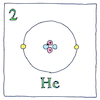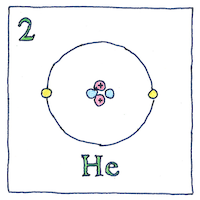Antonius van den Broek
chemistry

|
Atomic number
Ernest Rutherford realized the nucleus of an atom has a positive charge to be measured in units of the charge of an electron; however, he guessed it would be equal to half the atomic weight, which Antonius van den Broek quickly corrected, claiming the charge should be exactly equal to its position in the periodic table. * An element’s position in the periodic table is based on the number of protons in its nucleus. The number of neutrons is not always equal to the number of protons; many elements have multiple isotopes, each with a different number of neutrons but this was not yet understood.
Atomic parts
Nucleus containing protons and neutrons Electrons in atomic orbitals Electromagnetic force between protons and electrons Nuclear force between protons and neutrons Magnetic force is related to angular momentums of its nucleus and electrons and the spin of its electrons.
Z
Z for zahl in German, “number” is shorthand for “atomic number,” also for impedance, the third axis, the end of a series, Zoro, and, repeated, sleep.



Dmitri Mendeleev tried to order the first periodic table according to ascending atomic weights; however, he had to place tellurium ahead of iodine, even though tellurium has the greater atomic weight, to better align the chemical properties of the two with the chemical properties of the elements above them. The modern periodic table is arranged by atomic number.
Francis William Aston discovered isotopes in 1922, and James Chadwick discovered the neutron in 1932.
See also in The book of science:
Readings in wikipedia: